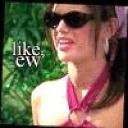Yahoo Answers is shutting down on May 4th, 2021 (Eastern Time) and beginning April 20th, 2021 (Eastern Time) the Yahoo Answers website will be in read-only mode. There will be no changes to other Yahoo properties or services, or your Yahoo account. You can find more information about the Yahoo Answers shutdown and how to download your data on this help page.
Trending News
accounting problem! accounts receivable?
A company estimates bad debt expense at 0.5% of credit sales. the company reported accounts receivable and allowance for uncollectible accounts of $381600 and $1650 respectively, at Dec 31,05. During 06, the company's credit sales and collections were $3180000 and $ 3200000, respectively, and $1720 in bad accounts was written off.
1) the accounts receivable at Dec 31, 06 are?
381600+3180000-3200000-1720=359880
2) the bad debt expense is?
3180000 x 0.5%= 15900
am i doing the right calculations? for bad debt expense, it says that it is estimated at 0.5% of credit sales so i simply put 3180000 times 0.5%. am i right? if i did something wrong please explain to me why and how. thanks!
i dont think its asking me for the net accounts receivable?
4 Answers
- JoLv 51 decade agoFavorite Answer
You're right except that u also need to deduct the allowance for doubtful debts.
Ending bal for allowance for doubtful debts = 1,650 +15,900 - 1,720 = 15,830
Beg A/R: 381,600
Credit sales: 318,000
Collections: (320,000)
Allowance for doubtful debts: (15,830)
---------------------------------------------------
Ending A/R = 363,770
[Updated]: Yeah, they're asking for the accounts receivable at Dec 31, 06 which means ending balance.
- EJ (Philippines)Lv 61 decade ago
You're correct. Now, the Allowance for Uncollectible Accounts account has a balance of:
= $ (1650 + 15900 - 1720)
= $ 15830
Your Accounts Receivable (net of allowance) will be:
= $359880 - $ 15830
= $344050
Source(s): My brain only. - Anonymous5 years ago
Using the folio number to match a journal entry to a source document would enable a person to easily trace the recorded transaction back to the source document and verify that the transaction actually took place (as evidenced by the source document). Journals may also often include a cross-referencing code or folio number to cross-reference between the journal entries and the accounts (the next step). Each specific item, such as bank, would have its own folio number, and this would be used to cross-reference from the journal entry involving ‘bank’ to the banks’ account in the ledger (this will be covered in the next section). The folio numbers make it simple to trace information through the steps in the accounting cycle.
- 1 decade ago
Your answers are correct. The bad debt expense is simply the % of sales. The write-offs reduce the allowance and the gross A/R.
Source(s): CPA


